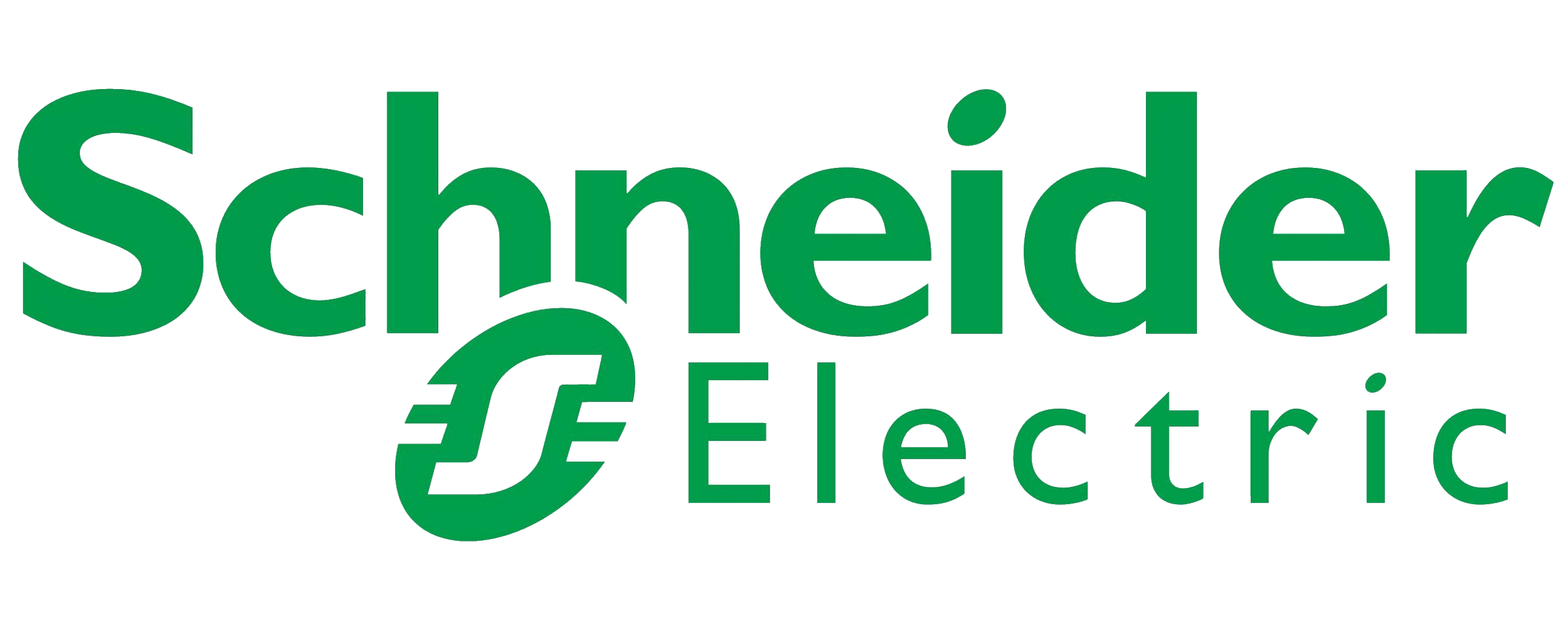Global Gold Mining Market By Mining Method, By Grade, By End User, By Region & Segmental Insights Trends and Forecast, 2024 – 2034
- Industry: Construction & Manufacturing
- Report ID: TNR-110-1296
- Number of Pages: 420
- Table/Charts : Yes
- September, 2024
- Base Year : 2024
- No. of Companies : 10+
- No. of Countries : 29
- Views : 10073
- Covid Impact Covered: Yes
- War Impact Covered: Yes
- Formats : PDF, Excel, PPT
Gold mining is the process of extracting gold from the earth, either from the surface or deep underground. Historically, gold mining has evolved significantly from its ancient origins in Egypt and Mesopotamia. Early gold mining was highly labor-intensive, with miners using simple tools to extract gold from riverbeds and shallow pits. Technological advancements in the 19th and 20th centuries, including the development of hydraulic mining, cyanidation, and open-pit mining, transformed gold extraction methods.
The global gold mining market saw significant growth in the early 21st century, driven by factors such as the rise in gold prices, improvements in mining technologies, and the identification of new gold reserves in countries such as China, Russia, and Australia. The market continues to evolve today with the integration of automation, digitalization, and sustainable practices, including the use of renewable energy and reducing carbon footprints in mining operations. The global gold mining market was valued at US$ 206.3 Bn in 2023, and is projected to witness CAGR of 3.51% during 2024 – 2034.
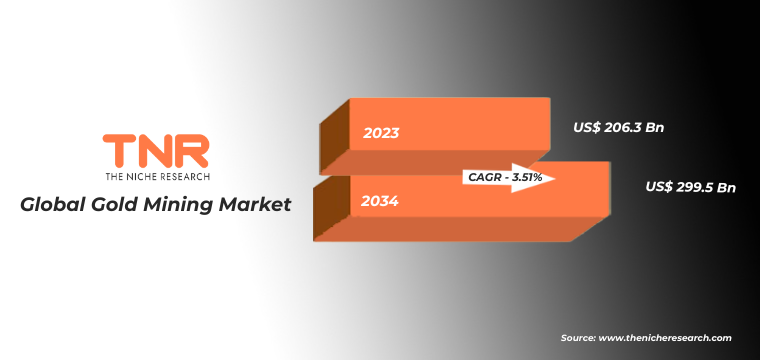
The global gold mining market represents a critical component of the global economy, as gold is one of the most valuable and traded commodities. Gold serves not only as a form of currency and a reserve asset but also plays a crucial role in various industrial applications, including electronics, medical devices, and aerospace. The market has evolved from manual and traditional mining methods to highly mechanized and technologically advanced operations.
Trends in the Global Gold Mining Market
Technological Advancements: Technological advancements in gold mining are significantly lowering operational costs. For instance, the integration of automation and AI in mining operations is leading to notable cost savings, with estimates suggesting a reduction in costs by up to 20-30%. Automated systems such as autonomous trucks and drilling machines have been key to streamlining processes, increasing productivity, and enhancing efficiency across major gold mines. This shift towards automation and AI-driven mining practices is transforming the industry by improving precision in exploration, optimizing resource extraction, and minimizing downtime.
Sustainability and Environmental Regulations: The gold mining market is under increasing pressure to adopt eco-friendly practices. In 2024, around 40% of mining companies are expected to implement sustainable solutions such as carbon capture technologies and the use of electric vehicles (EVs) at mining sites. Government bodies in countries like Canada and Australia have imposed stricter environmental laws to regulate emissions and water resource management. Companies like Agnico Eagle Mines are already using renewable energy sources to reduce their carbon footprint.
Rise in Central Bank Demand: Central banks are playing a significant role in increasing gold demand. In 2023, central banks’ gold purchases surged by 30%, with countries like China, India, and Turkey leading the trend. This increase is fueled by the need to diversify foreign reserves and protect against the volatility of fiat currencies like the US dollar.
Recycling and Urban Mining: Gold recycling from e-waste and urban mining is gaining momentum due to its environmental benefits. In 2023, recycled gold accounted for nearly 25% of global supply. Companies like Umicore and governments are focusing on recovering gold from discarded electronics, providing a sustainable alternative to traditional mining. This practice not only helps meet increasing demand but also reduces the environmental impact of mining activities.
Shifts in Geopolitics: Geopolitical instability, especially in Africa and the Middle East, is influencing gold mining operations and global gold prices. In regions such as Sudan and Mali, political unrest has disrupted mining operations, contributing to supply shortages and price volatility. Economic uncertainty also drives higher demand for gold as a safe-haven asset, which can push prices upward.
Global Gold Mining Market Segmental Insights
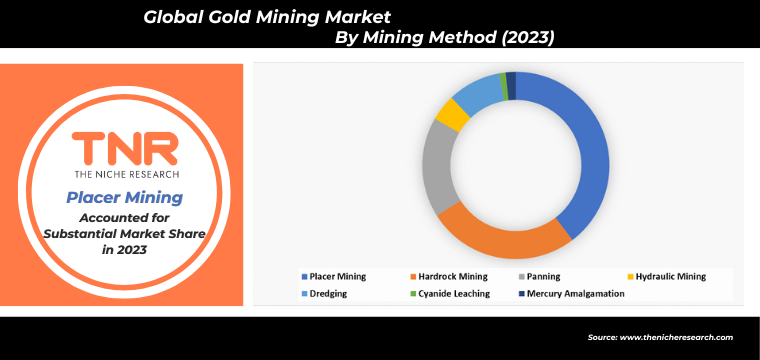
The placer mining segment has solidified its leading position in the global gold mining market, capturing a notable ~39% of the market revenue in 2023. This dominance stems from its effective method of extracting gold from alluvial deposits found in riverbeds and floodplains. Historically, placer mining played a crucial role during the California Gold Rush and continues to be significant in regions such as Alaska and Australia. Modern advancements, including sophisticated dredges and automated sluice boxes, have further enhanced its efficiency and profitability. The method’s cost-effectiveness, due to lower operational costs and simpler setup compared to hard rock mining, contributes to its substantial revenue share. Additionally, contemporary practices focus on reducing environmental impact, aligning with broader sustainability goals while maintaining economic advantages.
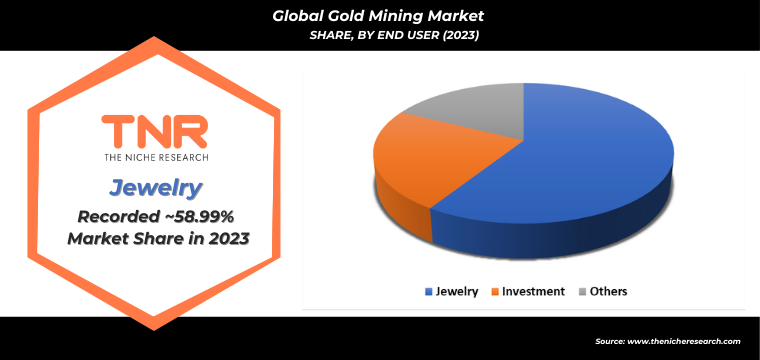
Jewelry accounted for over 55% of the total gold mining market share in 2023, highlighting its pivotal role in the industry. This significant share reflects the high demand for gold in jewelry, driven by both aesthetic appeal and investment value. For instance, India, a major consumer, saw gold jewelry accounting for around 25% of global gold demand, with about 900 metric tons of gold imported in 2023, largely for jewelry due to cultural traditions and festivals. Similarly, China’s jewelry market, valued over $100 billion in 2023, also significantly contributes to global gold demand, spurred by its growing middle class and increased disposable income. Well-known luxury brands such as Cartier and Tiffany & Co. further drive this demand with their high-end gold jewelry collections, while gold’s role as an investment also contributes to its market share, with about 15% of gold purchases being for investment purposes, including jewelry. The global gold jewelry market was valued at approximately $250 billion in 2023, underscoring the substantial revenue derived from this sector. Additionally, trends towards personalized jewelry and cultural significance, particularly in regions like the Middle East and Southeast Asia, reinforce gold’s dominant position in the jewelry market.
Global Gold Mining Market Regional Insights
Asia-Pacific leads the global gold mining market, accounting for 35% of global production. China stands out as the largest producer in this region, having experienced continuous growth due to robust governmental support and rising demand from both industrial sectors and investors. In 2023, China produced approximately 370 metric tons of gold, maintaining its position as the world’s top gold producer. This growth is fueled by policies that encourage mining investment and advancements in extraction technology. Additionally, the increasing demand for gold from various industrial applications, including electronics and renewable energy, as well as investor interest in gold as a hedge against economic uncertainties, further drive China’s dominant role in the market. The country’s significant production share underscores its critical position in the global gold supply chain and its influence on gold market dynamics.
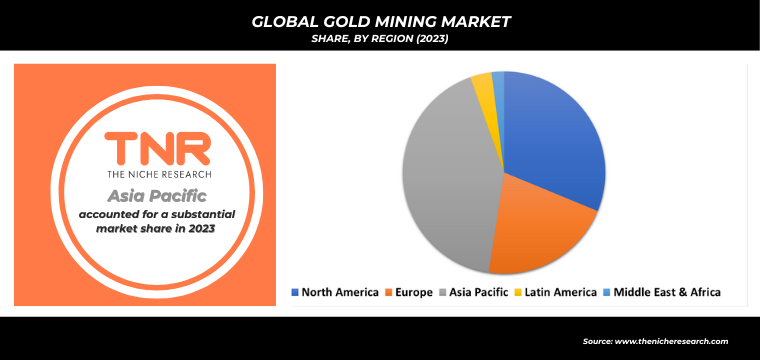
Key companies operating in the global gold mining market are:
- Agnico Eagle Mines Ltd
- AngloGold Ashanti Ltd
- Barrick Gold Corporation
- Coeur Mining
- Freeport-McMoRan
- Gold Fields Ltd
- Golden Star Resources
- GoldMining Inc
- Kinross Gold Corporation
- Newcrest Mining Ltd
- NovaGold Resources
- Polyus Gold International Ltd
- Royal Gold
- Other Industry Participants
Global Gold Mining Market: Key Insights
| Report Specifications | Details |
| Market Revenue in 2023 | US$ 206.3 Bn |
| Market Size Forecast by 2034 | US$ 299.5 Bn |
| Growth Rate (CAGR) | 3.51% |
| Historic Data | 2016 – 2022 |
| Base Year for Estimation | 2023 |
| Forecast Period | 2024 – 2034 |
| Report Inclusions | Market Size & Estimates, Market Dynamics, Competitive Scenario, Trends, Growth Factors, Market Determinants, Key Investment Segmentation, Product/Service/Solutions Benchmarking |
| Segments Covered | By Mining Method, By Grade, By End User |
| Regions Covered | North America, Europe, Asia Pacific, Middle East & Africa, Latin America |
| Countries Covered | U.S., Canada, Mexico, Rest of North America, France, The UK, Spain, Germany, Italy, Nordic Countries (Denmark, Finland, Iceland, Sweden, Norway), Benelux Union (Belgium, The Netherlands, Luxembourg), Rest of Europe, China, Japan, India, New Zealand, Australia, South Korea, Southeast Asia (Indonesia, Thailand, Malaysia, Singapore, Rest of Southeast Asia), Rest of Asia Pacific, Saudi Arabia, UAE, Egypt, Kuwait, South Africa, Rest of Middle East & Africa, Brazil, Argentina, Rest of Latin America |
| Key Players | Agnico Eagle Mines Ltd, AngloGold Ashanti Ltd, Barrick Gold Corporation, Coeur Mining, Freeport-McMoRan, Gold Fields Ltd, Golden Star Resources, GoldMining Inc, Kinross Gold Corporation, Newcrest Mining Ltd, NovaGold Resources, Polyus Gold International Ltd, Royal Gold, Other Industry Participants |
| Customization Scope | Customization allows for the inclusion/modification of content pertaining to geographical regions, countries, and specific market segments. |
| Pricing & Procurement Options | Explore purchase options tailored to your specific research requirements |
| Contact Details | Consult With Our Expert
Japan (Toll-Free): +81 663-386-8111 South Korea (Toll-Free): +82-808- 703-126 Saudi Arabia (Toll-Free): +966 800-850-1643 United Kingdom: +44 753-710-5080 United States: +1 302-232-5106 E-mail: askanexpert@thenicheresearch.com |
Global Gold Mining Market
By Mining Method
- Placer Mining
- Hardrock Mining
- Underground gold Mining
- Open-pit Gold Mining
- Panning
- Hydraulic Mining
- Dredging
- Cyanide Leaching
- Mercury Amalgamation
By Grade
- Low
- Average
- High
By End User
- Jewelry
- Investment
- Others
By Region
- North America (U.S., Canada, Mexico, Rest of North America)
- Europe (France, The UK, Spain, Germany, Italy, Nordic Countries (Denmark, Finland, Iceland, Sweden, Norway), Benelux Union (Belgium, The Netherlands, Luxembourg), Rest of Europe)
- Asia Pacific (China, Japan, India, New Zealand, Australia, South Korea, Southeast Asia (Indonesia, Thailand, Malaysia, Singapore, Rest of Southeast Asia), Rest of Asia Pacific)
- Middle East & Africa (Saudi Arabia, UAE, Egypt, Kuwait, South Africa, Rest of Middle East & Africa)
- Latin America (Brazil, Argentina, Rest of Latin America)
Global Gold Mining Market: Report Layout
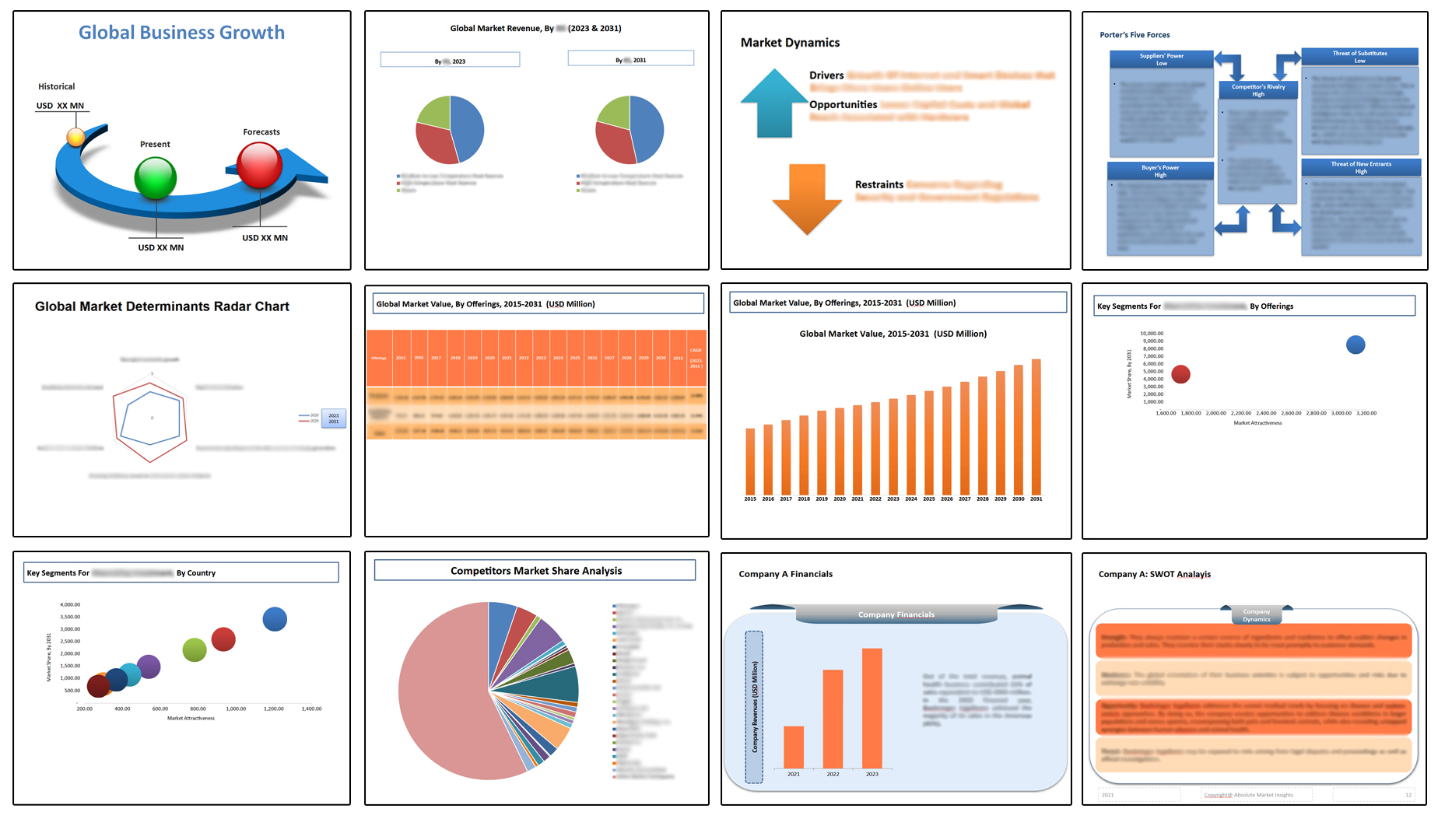
Table of Contents
Note: This ToC is tentative and can be changed according to the research study conducted during the course of report completion.
**Exclusive for Multi-User and Enterprise User.
Global Gold Mining Market
By Mining Method
- Placer Mining
- Hardrock Mining
- Underground gold Mining
- Open-pit Gold Mining
- Panning
- Hydraulic Mining
- Dredging
- Cyanide Leaching
- Mercury Amalgamation
By Grade
- Low
- Average
- High
By End User
- Jewelry
- Investment
- Others
By Region
- North America (U.S., Canada, Mexico, Rest of North America)
- Europe (France, The UK, Spain, Germany, Italy, Nordic Countries (Denmark, Finland, Iceland, Sweden, Norway), Benelux Union (Belgium, The Netherlands, Luxembourg), Rest of Europe)
- Asia Pacific (China, Japan, India, New Zealand, Australia, South Korea, Southeast Asia (Indonesia, Thailand, Malaysia, Singapore, Rest of Southeast Asia), Rest of Asia Pacific)
- Middle East & Africa (Saudi Arabia, UAE, Egypt, Kuwait, South Africa, Rest of Middle East & Africa)
- Latin America (Brazil, Argentina, Rest of Latin America)
The Niche Research approach encompasses both primary and secondary research methods to provide comprehensive insights. While primary research is the cornerstone of our studies, we also incorporate secondary research sources such as company annual reports, premium industry databases, press releases, industry journals, and white papers.
Within our primary research, we actively engage with various industry stakeholders, conducting paid interviews and surveys. Our meticulous analysis extends to every market participant in major countries, allowing us to thoroughly examine their portfolios, calculate market shares, and segment revenues.
Our data collection primarily focuses on individual countries within our research scope, enabling us to estimate regional market sizes. Typically, we employ a bottom-up approach, meticulously tracking trends in different countries. We analyze growth drivers, constraints, technological innovations, and opportunities for each country, ultimately arriving at regional figures.Our process begins by examining the growth prospects of each country. Building upon these insights, we project growth and trends for the entire region. Finally, we utilize our proprietary model to refine estimations and forecasts.
Our data validation standards are integral to ensuring the reliability and accuracy of our research findings. Here’s a breakdown of our data validation processes and the stakeholders we engage with during our primary research:
- Supply Side Analysis: We initiate a supply side analysis by directly contacting market participants, through telephonic interviews and questionnaires containing both open-ended and close-ended questions. We gather information on their portfolios, segment revenues, developments, and growth strategies.
- Demand Side Analysis: To gain insights into adoption trends and consumer preferences, we reach out to target customers and users (non-vendors). This information forms a vital part of the qualitative analysis section of our reports, covering market dynamics, adoption trends, consumer behavior, spending patterns, and other related aspects.
- Consultant Insights: We tap into the expertise of our partner consultants from around the world to obtain their unique viewpoints and perspectives. Their insights contribute to a well-rounded understanding of the markets under investigation.
- In-House Validation: To ensure data accuracy and reliability, we conduct cross-validation of data points and information through our in-house team of consultants and utilize advanced data modeling tools for thorough verification.
The forecasts we provide are based on a comprehensive assessment of various factors, including:
- Market Trends and Past Performance (Last Five Years): We accurately analyze market trends and performance data from preceding five years to identify historical patterns and understand the market’s evolution.
- Historical Performance and Growth of Market Participants: We assess the historical performance and growth trajectories of key market participants. This analysis provides insights into the competitive landscape and individual company strategies.
- Market Determinants Impact Analysis (Next Eight Years): We conduct a rigorous analysis of the factors that are projected to influence the market over the next eight years. This includes assessing both internal and external determinants that can shape market dynamics.
- Drivers and Challenges for the Forecast Period:Identify the factors expected to drive market growth during the forecast period, as well as the challenges that the industry may face. This analysis aids in deriving an accurate growth rate projection.
- New Acquisitions, Collaborations, or Partnerships: We keep a close watch on any new acquisitions, collaborations, or partnerships within the industry. These developments can have a significant impact on market dynamics and competitiveness.
- Macro and Micro Factors Analysis:A thorough examination of both macro-level factors (e.g., economic trends, regulatory changes) and micro-level factors (e.g., technological advancements, consumer preferences) that may influence the market during the forecast period.
- End-User Sentiment Analysis: To understand the market from the end-user perspective, we conduct sentiment analysis. This involves assessing the sentiment, preferences, and feedback of the end-users, which can provide valuable insights into market trends.
- Perspective of Primary Participants: Insights gathered directly from primary research participants play a crucial role in shaping our forecasts. Their perspectives and experiences provide valuable qualitative data.
- Year-on-Year Growth Trend: We utilize a year-on-year growth trend based on historical market growth and expected future trends. This helps in formulating our growth projections, aligning them with the market’s historical performance.
Research process adopted by TNR involves multiple stages, including data collection, validation, quality checks, and presentation. It’s crucial that the data and information we provide add value to your existing market understanding and expertise. We have also established partnerships with business consulting, research, and survey organizations across regions and globally to collaborate on regional analysis and data validation, ensuring the highest level of accuracy and reliability in our reports.




